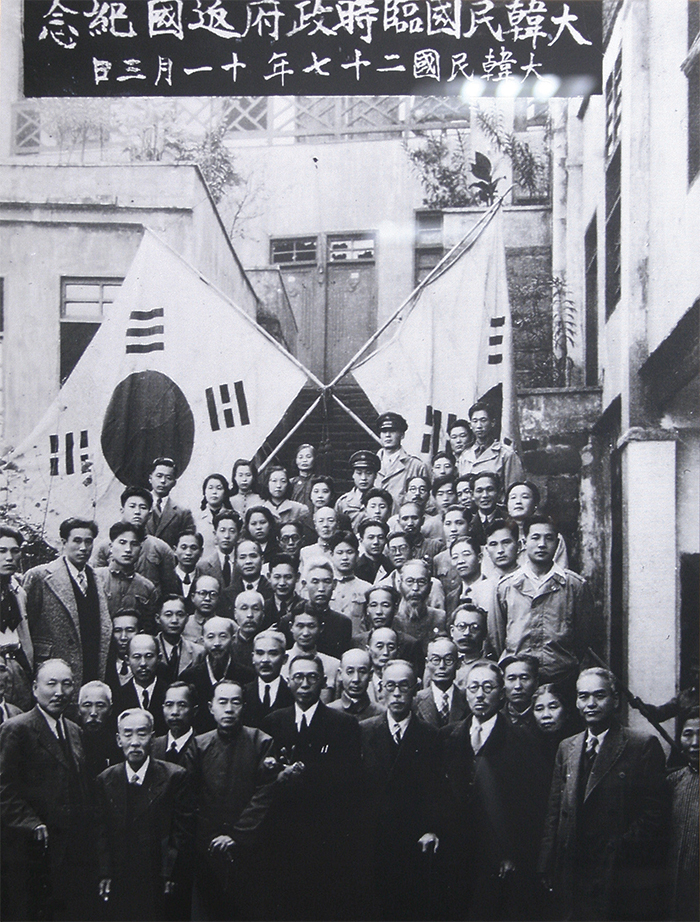During the colonial period, the Japanese pillaged Joseon’s resources, banned the use of the Korean language–even going so far in 1939 as to require Koreans to change their personal names to Japanese style surnames and given names under the Name Order, and conscripted Koreans into their work force or as uniformed soldiers in the Pacific War. Koreans engaged in persistent struggles to regain their independence. They organized numerous clandestine organizations to fight the Japanese within the country such as Joseon National Sovereignty Restoration Group and The Korea Liberation Corps. They also established forward bases for the independence movement in China, Russia, and the United States and led unprecedentedly peaceful demonstrations. In March 1919, Korean leaders announced the Declaration of Independence. Students and ordinary people staged street demonstrations across the country shouting their motto, “Long Live Korean Independence!” The movement spread to the Koreans resisting in Manchuria, the Maritime Provinces of Siberia, the United States, Europe, and even to Japan. Following the March 1st Movement, organizations representing Koreans were established in Seoul, the Maritime Province of Siberia, and Shanghai. Of these, the Provisional Government of the Republic of Korea, which was established in Shanghai, China, is the country’s first democratic republican government; it was equipped with a modern Constitution and a political system that separated the three basic branches (executive, legislature and judicial) of government.

Koreans also carried out armed struggles against the Japanese. In the 1920s, more than 30 Korean independence army units engaged in resistance activities in Manchuria and the Maritime Provinces of Siberia. For example, in June 1920, the Battle of Fengwudong was a battle that occurred in Fengwutung, Jilin province, China between Japanese forces and Korean independence militias led by Hong Beom-do to a big victory. Another is the Battle of Qingshanli, which was fought over six days in October 1920 between the Imperial Japanese Army and the Northern Military Administration Office Army led by Kim Jwa-jin along with other Korean armed groups. They won a great victory against Japanese troops in Helongxian, Manchuria.
In 1940, the Provisional Government of the Republic of Korea (PGK) organized the Korean Liberation Army in Chungqing, integrating many scattered volunteer independence armies and militias in Manchuria. The PGK declared war against Japan and dispatched troops to the front lines in India and Myanmar to fight on the side of the Allied Forces. Some young Koreans received special training from a special military unit of the United States to better equip themselves to attack Japanese forces in Korea. On August 15, 1945, Koreans finally received what they had looked forward to for so long: the country’s liberation as a result of Japan’s surrender in the Pacific War. U.S. and Soviet troops were deployed to the south and north of the 38th parallel, respectively to disarm Japanese troops remaining on the Korean Peninsula.

Leaders of the Provisional Government of the Republic of Korea
The leading members of Korean Provisional Government (KPG), officially established as the Provisional Government of the Republic of Korea in April 1919 in Shanghai, which played a pivotal role in the independence movements right from April 1919 until the country’s liberation in August 1945.
Koreans also carried out armed struggles against the Japanese. In the 1920s, more than 30 Korean independence army units engaged in resistance activities in Manchuria and the Maritime Provinces of Siberia. For example, in June 1920, the Battle of Fengwudong was a battle that occurred in Fengwutung, Jilin province, China between Japanese forces and Korean independence militias led by Hong Beom-do to a big victory. Another is the Battle of Qingshanli, which was fought over six days in October 1920 between the Imperial Japanese Army and the Northern Military Administration Office Army led by Kim Jwa-jin along with other Korean armed groups. They won a great victory against Japanese troops in Helongxian, Manchuria.
In 1940, the Provisional Government of the Republic of Korea (PGK) organized the Korean Liberation Army in Chungqing, integrating many scattered volunteer independence armies and militias in Manchuria. The PGK declared war against Japan and dispatched troops to the front lines in India and Myanmar to fight on the side of the Allied Forces. Some young Koreans received special training from a special military unit of the United States to better equip themselves to attack Japanese forces in Korea. On August 15, 1945, Koreans finally received what they had looked forward to for so long: the country’s liberation as a result of Japan’s surrender in the Pacific War. U.S. and Soviet troops were deployed to the south and north of the 38th parallel, respectively to disarm Japanese troops remaining on the Korean Peninsula.
